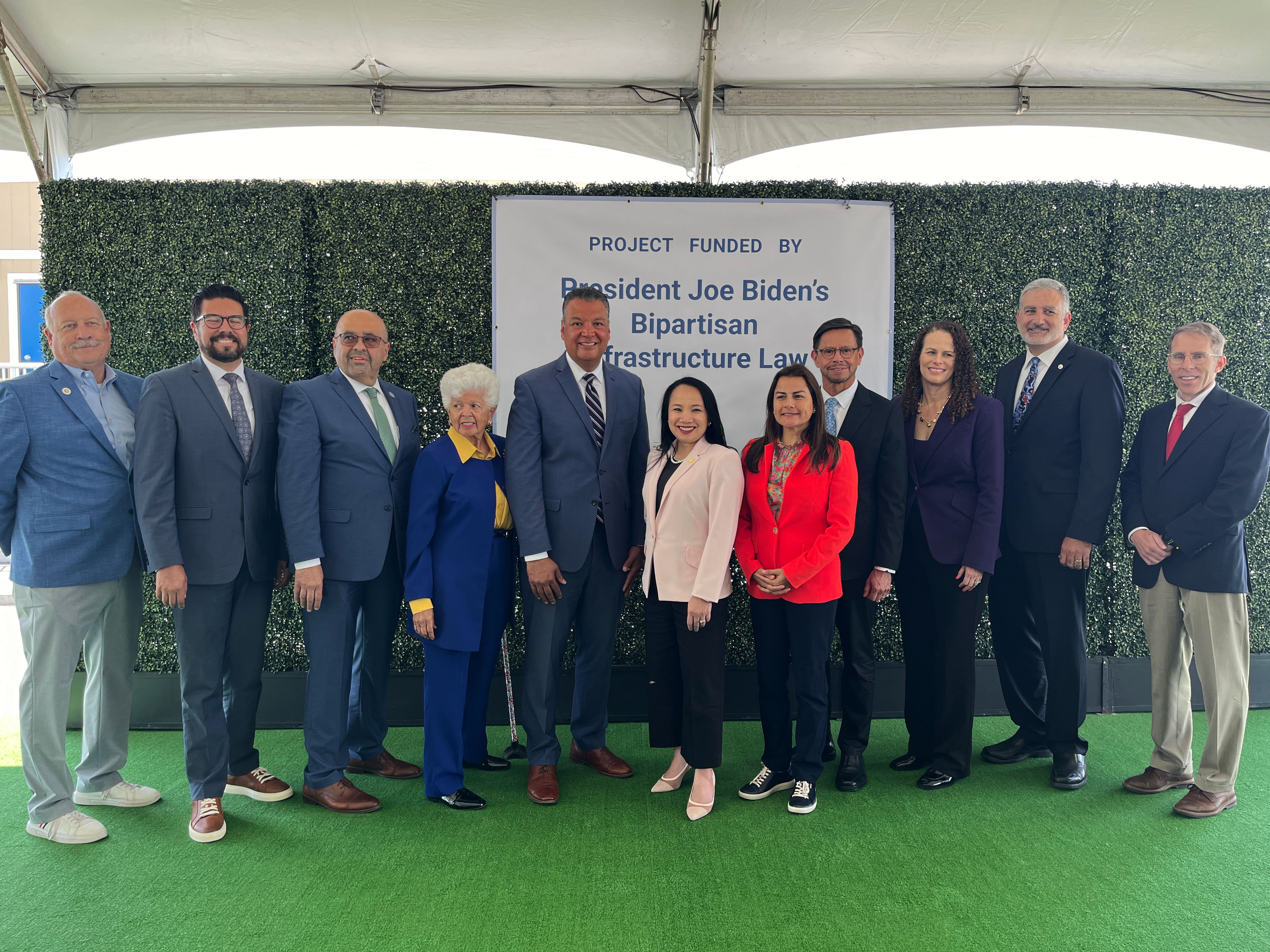Large-scale water recycling projects will lead to more than 182,000 acre-feet of additional water supply, increasing resilience and water security across the West
 Commissioner Touton with other principals at the announcement of $179 million for water reuse projects in California and Utah.
Commissioner Touton with other principals at the announcement of $179 million for water reuse projects in California and Utah.
LOS ANGELES – The Department of the Interior today announced a $179 million investment through President Biden’s Investing in America agenda for innovative water reuse projects that strengthen drought resilience across the West, increasing water security and resilience across western communities. Today’s funding from the Bipartisan Infrastructure Law will support four projects in California and Utah to help communities create new sources of water to support water reliability.
These investments support the Department’s new Large-Scale Water Recycling Program, launched in 2023 as a result of new funds from the Bipartisan Infrastructure Law. The new program incentivizes conservation projects at a larger scale, with no cap on project size, and will play an important role in helping communities develop local, drought-resistant water supplies by turning unusable water sources into clean, reliable ones.
President Biden’s Investing in America agenda represents the largest investment in climate resilience in the nation’s history and is providing much-needed resources to enhance Western communities’ resilience to drought and climate change. Through the Bipartisan Infrastructure Law, Reclamation is investing a total of $8.3 billion over five years for water infrastructure projects, including rural water, water storage, conservation and conveyance, nature-based solutions, dam safety, water purification and reuse, and desalination. Since the Bipartisan Infrastructure Law was signed in November 2021, Reclamation has announced more than $3.5 billion for more than 530 projects.
“Water is essential to everything we do: feeding families, growing crops, powering agricultural businesses, sustaining wildlife and safeguarding Tribal subsistence practices,” said Secretary Deb Haaland. “As the climate crisis drives severe drought conditions across the West, it will take all of us working together to safeguard our communities and enhance water reliability. Through President Biden’s Investing in America agenda, we have historic new investments that are helping us to build a water supply that will sustain future generations.”
Bureau of Reclamation Commissioner Camille Calimlim Touton made the announcement today during a visit to the Metropolitan Water District of Southern California. The district is receiving more than $99 million for large-scale water recycling planning and design for the Pure Water Southern California facility. Upon completion, the project is expected to deliver up to 118,590 acre-feet of recycled water annually – enough to meet the average annual needs of more than 470,000 people. This project is also expected to reduce the district’s reliance on water from the Colorado River. Officials from the city of Buenaventura, the Los Angeles Department of Water and Power and the Washington County Water Conservancy District, which are also receiving funding from today’s announcement, also joined for the event.
“These historic investments will add a significant tool to our toolbox to bolster drought resilience in communities across the country,” said Reclamation Commissioner Camille Calimlim Touton. “The projects being funded from President Biden’s Investing in America agenda will diversify our water supplies by taking these currently unusable water sources and turning them into new supplies to help meet growing water needs.”
In addition to the Metropolitan Water District of Southern California project, additional projects funded today include:
- $30 million for the city of Buenaventura’s Ventura Water Pure Program
- $30 million for the Los Angeles Groundwater Replenishment Project
- $20.5 million for Washington County Water Conservancy District, Utah’s Regional Reuse system
Water recycling projects funded through the program will provide large-scale benefits to increase water management flexibility and stretch existing drinking water supplies with sources of water that are more drought resistant. Once constructed, the selected projects are expected to result in a combined annual capacity of more than 182,000 acre-feet of additional water supply and water security.


